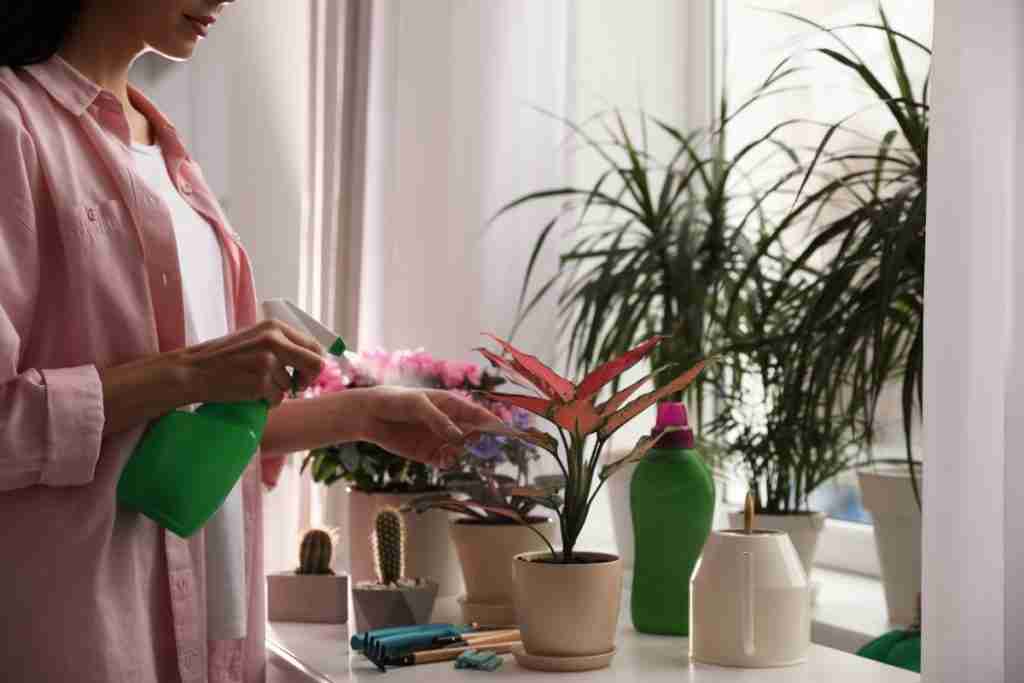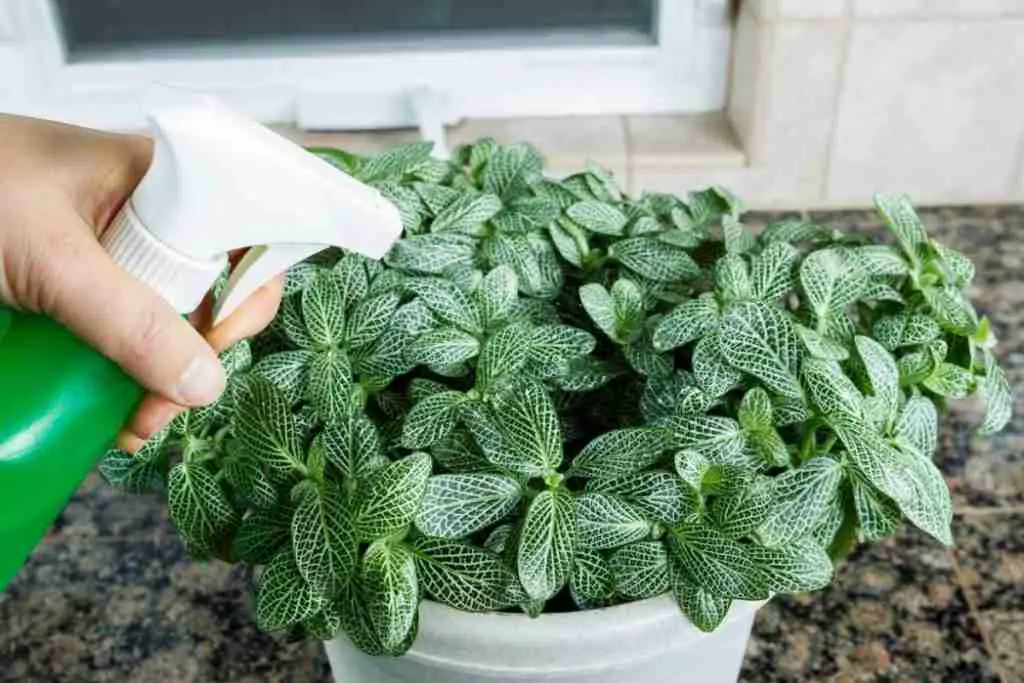
Indoor plants bring life, beauty, and a breath of fresh air into our homes. However, just like their outdoor counterparts, indoor plants are susceptible to pests and diseases that can hinder their growth and vitality. In the quest for effective and natural plant care solutions, neem oil has emerged as a popular choice among gardeners and plant enthusiasts. Derived from the neem tree (Azadirachta indica), neem oil offers a multitude of benefits for indoor plants. In this article, we will explore the various uses, advantages, and application methods of neem oil to help you maintain healthy and thriving indoor plants.
Table of Contents
Understanding Neem Oil
Neem oil has been used for centuries in traditional medicine and agricultural practices. It is extracted from the seeds of the neem tree, which is native to the Indian subcontinent. The oil contains several active compounds, including azadirachtin, nimbin, and salannin, which contribute to its potent properties. Neem oil is renowned for its antifungal, antibacterial, and insecticidal qualities, making it an excellent organic solution for plant care.
Controlling Pests
One of the primary uses of neem oil in indoor gardening is pest control. Many common indoor plant pests, such as aphids, spider mites, whiteflies, and mealybugs, can wreak havoc on your plants if left unchecked. Neem oil acts as a natural insecticide, disrupting the life cycles of pests and inhibiting their feeding habits. When applied, it suffocates the pests, repels them, and interferes with their ability to lay eggs, effectively reducing their population.
To utilize neem oil for pest control, dilute it with water according to the manufacturer’s instructions. Use a spray bottle to apply the solution evenly on both sides of the plant leaves, stems, and affected areas. It’s important to note that neem oil is most effective as a preventive measure or at the early stages of an infestation. Regular monitoring and repeated applications may be necessary for severe pest problems. Neem oil can also be used to get rid of the following pests:
- Fruit flies
- Thrips
- Fleas
- Mosquitos
- Caterpillars
- Fire ants
- Scale insects
- Weevils
- Japanese beetle bugs
- Fungus gnats
- Tomato hornworms
- Grubs
Preventing Fungal Diseases
Indoor plants are susceptible to various fungal diseases, such as powdery mildew, black spot, and root rot. Neem oil’s antifungal properties make it an invaluable tool in preventing and combating these issues. It inhibits the growth of fungi and disrupts their spore production, effectively suppressing fungal infections. To use neem oil as a preventive measure against fungal diseases, mix it with water and apply it as a foliar spray. Ensure complete coverage of the leaves, stems, and affected areas. Repeat the application every two to three weeks, especially during humid conditions or if fungal diseases are prevalent.
Boosting Plant Health
Neem oil not only serves as a pest control and antifungal agent but also promotes overall plant health. Its application can stimulate root development, enhance nutrient absorption, and improve the plant’s immune system. Neem oil is rich in essential nutrients, including nitrogen, phosphorus, and potassium, which contribute to the plant’s growth and vitality.
To boost plant health, dilute neem oil and apply it to the soil around the plant’s base. The oil will be absorbed by the roots, benefiting the plant from within. This method is particularly beneficial for young or newly transplanted indoor plants, as it helps establish a strong root system.
How Do You Use Neem Oil on Indoor Plants?
There are many ways you can use neem oil on indoor plants. You can dip a q-tip into a container and gently wipe the leaves, or you can completely wash your plant, from leaf to stem. But the most popular and easiest way is to put some in a spray bottle and gently mist your plants.
7 Steps for Using Neem Oil on Indoor Plants
The stage is set. You now know all you need to know about neem oil and how it plays such a beneficial role in houseplant health, so without further ado, here are seven steps for using neem oil that really work.

Step 1: Prep Your Plants
Rid all of your plants of dust and debris before spraying the neem oil on them. This will ensure you get proper coverage for the best results.
You should always wear gloves and protective eye gear when using neem spray and ensure you are applying it at the perfect time of day.
Never spray neem oil on your house plant while it is exposed to direct sunlight. Either remove the plant from sunlight at the time of application or only spray it early in the morning or later at night.
It would be frustrating and a waste of time if the solution evaporates away before it has a chance to be effective.
Step 2: Mix Your Solution
If you choose to make your own solution rather than buying one, you’ll want to mix it up beforehand and ensure it is properly prepped.
One of the most popular mixes for neem oil solutions is ½ tsp of 100% neem oil, warm water, and a few drops of Dawn dish soap mixed into a 16-ounce spray bottle.
Step 3: Test the Mixture
Before spraying the entire plant with the natural pesticide solution, try spraying just a little bit of the mixture onto a small portion of the foliage.
Then, wait for 24 hours to ensure your plant isn’t going to have a negative reaction to the mixture.

Step 4: Spray the Entire Plant
If nothing happens to the test spot, it is time to cover the entire plant with your mixture.
Spray a consistent and generous amount of the solution to all areas of your plant, soil, and around the pot.
Spraying the pot itself can help keep any outside bugs from crawling up the container, never having the chance to get to the foliage inside.
Step 5: Soak the Soil
Soaking the soil with neem oil solution can protect the roots of your plants by killing any larvae that may have taken up residency there.
While using the solution you made to wipe down your plants is a good way to mix it into the soil, you can also add a tiny bit of neem oil to your watering can, using a very diluted mix frequently.
Step 6: Allow Time to Dry
Neem oil needs time to dry before you should expose the plant to sunlight or any added watering. You want the solution to create a protective yet light barrier on the plant to ensure it will be effective.
If you wash the solution away too soon or allow the sunlight to help it evaporate away, you might not get the outcome you were hoping for.
Another reason you want to keep your plant out of the sun while treating it with neem oil spray is to prevent it from burning.
Some people believe that neem oil solution can burn plant leaves, a thought that isn’t backed up by scientific evidence. However, spraying the solution on your leaves while the hot sun beams are directly in contact with the plant can lead to scorching.
Step 7: Keep an Eye on Your Plant and Reapply As Needed
Once you apply the mixture, don’t assume the problem will disappear permanently. More often than not, the plant will require repeated applications.
It is recommended you use the solution at least once a week for up to a month to ensure all of the insect, larvae, eggs, and mildew have been wiped out.
Once the infestation is under control, you can use the solution every 3-4 weeks as maintenance.
Would You Rather Wipe Down the Leaves?
If you are simply being proactive or have small plants that you would much rather wipe down the leaves than spot spray, you can use this method rather than a bottle. Most people that prefer wiping down their plants with neem oil will use cotton balls, paint brushes, or a small sponge. Needless to say, this method will take quite a bit of time, but it is also much more thorough than the spray bottle.
FAQs
Do you still have questions regarding the use of neem oil on indoor plants? Well, we have the answers.
Can You Use Neem Oil on All Plants?
While neem oil is safe to use on most plants, there are a few you should never spray with this solution. These include basil, parsley, peas, spinach, cilantro, chives, lettuce, etc.
Most herbs and leafy vegetables should be left out of the spray lineup.
You should also avoid adding the oil to plants with furry leaves or spikes since these are not flat surfaces and won’t get good coverage.
Can You Use Too Much Neem Oil?
A nice, healthy dose of neem oil covering an entire plant is the best way to get the most benefits. However, if you overdo it by not diluting the oil enough or spraying too often, you can suffocate your plants.
Is Neem Oil Safe?
Yes, you can feel comfortable using this natural product on houseplants and around pets and children. However, neem oil should never be ingested.
Conclusion
Neem oil provides a versatile and eco-friendly solution for maintaining healthy indoor plants. Its natural insecticidal, antifungal, and plant-boosting properties make it an excellent choice for pest control, disease prevention, and overall plant health. By incorporating neem oil into your indoor plant care routine, you can protect your plants from common pests, fungal infections, and other stressors, ensuring they thrive and beautify your living spaces.
Remember to follow the recommended dilution ratios, test on a small area, and exercise caution during application to achieve the best results. With neem oil as your ally, you can enjoy a flourishing indoor garden that brings joy and tranquility to your home.

The List Of 20+ Best Neem Oil For Indoor Plants
Monday 5th of September 2022
[…] Source: 🔗 […]